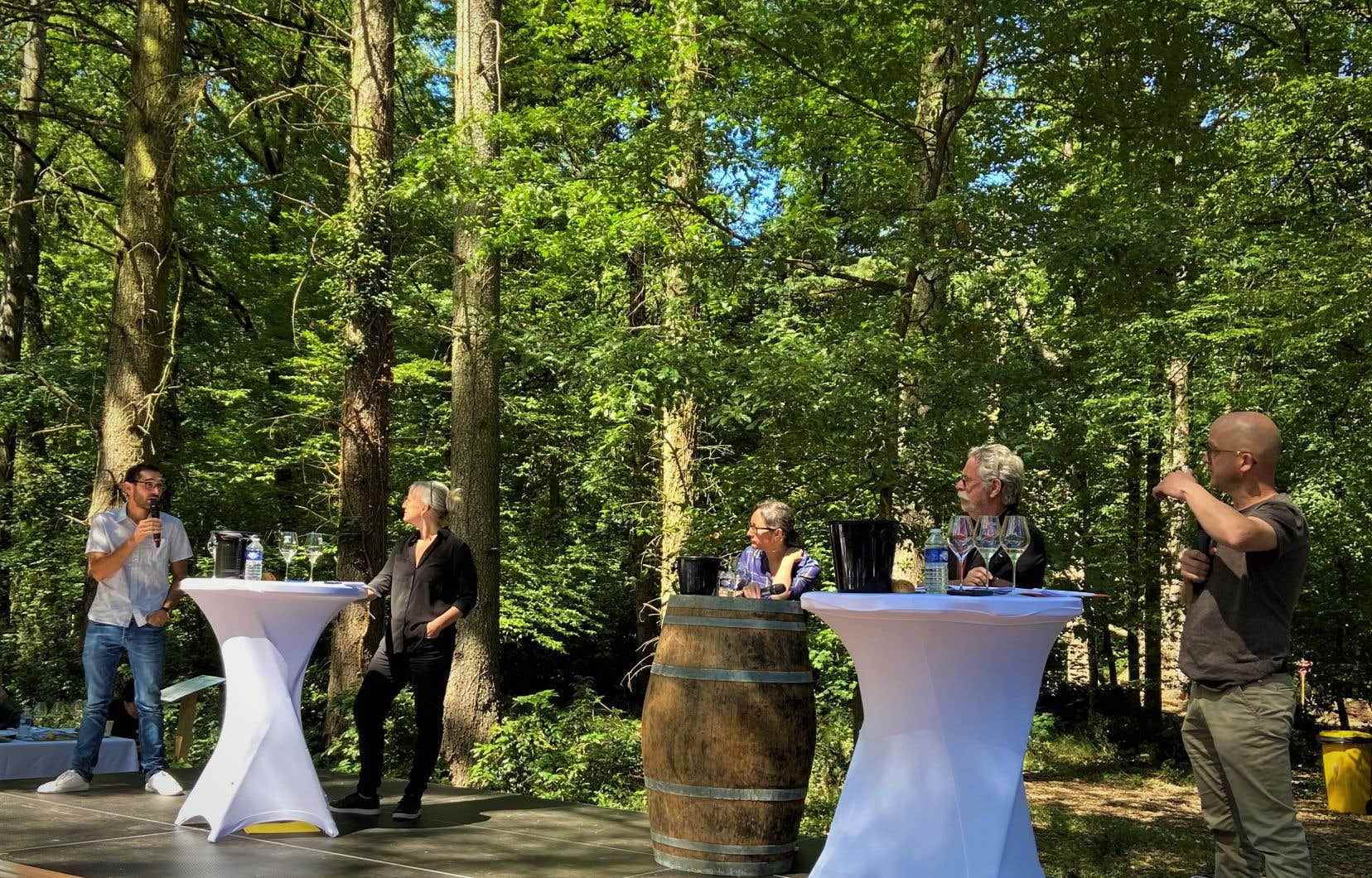The very first edition of the biannual event “Montlouis on the Rock” took place very recently under the thick foliage of trees well over a hundred years old at the Château de la Bourdaisière in Montlouis-sur-Loire. Winegrowers, journalists and specifiers were invited to taste in the open air, under the learned and enlightened but never pedantic direction of the hosts Pascaline Lepeltier and our national chic Véronique Rivest, around complementary themes bringing together terroir footprints, climatic issues and multiple expressions of the great grape variety. Chenin Blanc. Whether from France (with Thomas Fort, Domaine de Mouscaillo in AOC Limoux) or from Spain (José Luis Mateo, Quinta da Muradella), from the United States (Thomas Monroe, Division Wine Making Company) or from Africa South (Craig Hawkins, Testalonga El Bandito Swartland).
The exercise, as fascinating as it was instructive, made it possible to take stock of the situation on three continents, while highlighting the current viticultural problems linked to the versatile white grape variety, but also to put forward avenues for reflection and solutions to ensure their growth and sustainability. A first master class was devoted to the terroir effect and the expression of chenin, as well as a second to the impact of climatic hazards on the expression of wines. But first, let’s try an overview of King Chenin in his host country in his stronghold covering 450 hectares between the Cher (in the south) and the Loire (in the north) in AOC Montlouis-sur-Loire.
If they cannot count on plots facing south and protected like their vis-à-vis Vouvray, on the edge of the Loire, the wines of Montlouis nevertheless have a similarity of basements which seem to confer, at least “in my own book”, a grace, an additional tension, a bit like Pouilly-Fumé would express it in relation to its neighbor Sancerre to the west. Here, the micaceous chalk, the yellow tufa, the clays with flint, the puddingstones and pebbles form a network of pedological interlacings with, on the downward slopes of the plateau inclined towards the Cher, a more clayey-siliceous substrate. Nearly 50% of the vineyard is certified organic or biodynamic for a total production which favors sparkling wines in a proportion of 60%, the balance being declined in dry (30%), dry-tender and sweet. It’s not always easy to distinguish a Vouvray from a Montlouis, although the latter has an undeniable quality/pleasure/price/authenticity ratio.
Terroir effect and expression
Historically, Chenin Blanc was harvested as it presented itself in the vineyard. The fermentation in the cellar then decided the style (more or less dry) obtained. “The approach through successive sortings would then decide on the choice of the style of wine desired”, commented Damien Delecheneau (Domaine La Grange Tiphaine), while José Luis Mateo, for his part, is counting on the effect at home of the flora during fermentation to reduce the alcohol content “thus favoring the expression of the characteristics of the terroir”. If for Pascaline Lepeltier “the ultimate goal is to manage to harmoniously build the balance of the wine by interpreting the grape variety as being historically an acidifier during the blends”, Jacky Blot (Domaine La Taille aux Loups), he observed “that vinification in stainless steel vats (without the lees) and the absence of malolactic acid give the wine more verticality, knowing that in the end, whether the wine is dry or not, only the balance is important. Of course, in Montlouis as elsewhere in the Loire, the subtlety of the plot nuances (exposures, more or less deep source rock, drainage, etc.) does the rest, for the happiness of fans of the great Loire grape variety. Continued next week.
Effervescent starter of Extra Brut
He reads a glass of wine in his hand and with his two eyes, taste buds on the lookout and heart open to wines and spirits, this is what the team of the brand new magazine offers Extra Brut, to be published three times a year and edited by sommelier Karyne Duplessis Piché. The initiative is beautiful, necessary and logical in this Quebec context where, year after year, the state monopoly generates some 3590 billion dollars in net sales (fiscal year 2020-2021). Hence the astonishment that there is only one magazine of its kind here. Done now. The format is small, but sees large, the collaborators serious without however taking the lead and the offer touches as closely as possible the global context of trends in terms of the pleasures of the mouth. As you do so diligently to The dutyall you have to do is support them by subscribing to extrabrut.that. With Pierre Cambronne’s famous word for the editor!
